Bob and Ann
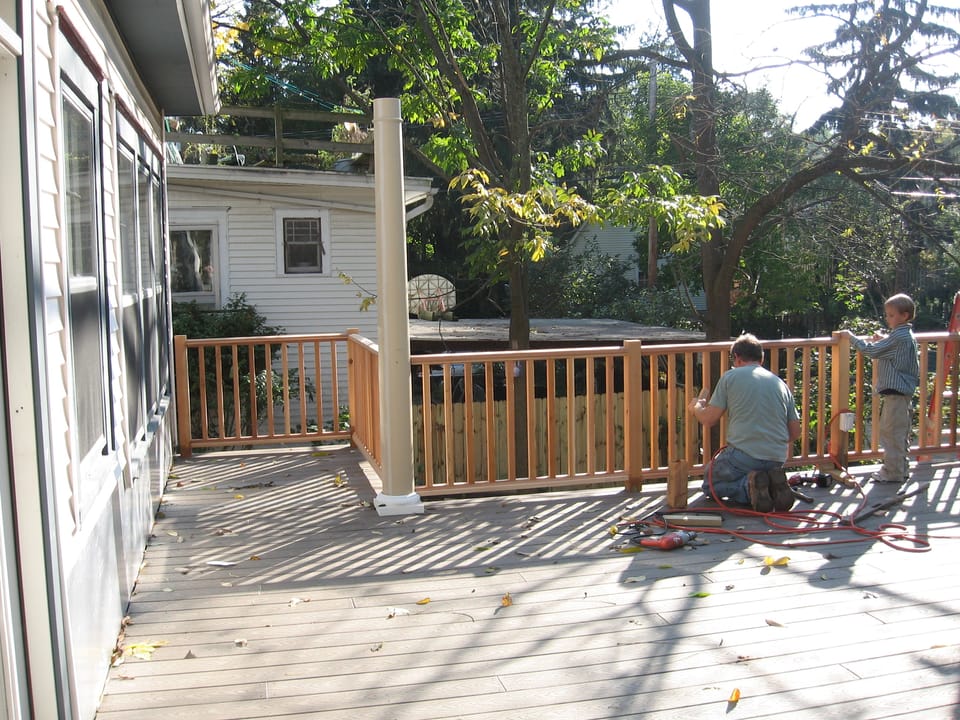
As you know if you've been with us since the start of this journey, we bought 615 Sunset Lane chiefly to save two trees: the oak tree in the front that we've named Bob and the walnut in the back we've named Ann.
Bob the Human was our general contractor for nearly 20 years at our home at 621 Sunset Lane, and Ann the Human was his carpenter through much of that. They started with our kitchen, moved on to build us a new garage with a great back deck on top (see above), and then rehabbed our second-floor bathroom, built my writing cottage out back, rebuilt the whole third floor into a bedroom suite with a solarium, build us a beautiful new mantle with bookended bookcases in the living room, and, finally, reconstructed the front porch, which had rotted out.
As you might imagine, Bob and Ann kind of became family. Our son Kepler (who is about to start a Ph.D. in Molecular Engineering) always had a penchant for building, and Bob and Ann were ever so patient with all of his questions about their tools and the uses of them.
What made working with Bob so special was not just that. It was also his Japanese-influenced design sensibility that had him always considering the light, the proportions, and the wood of a job.
We never had to explain to Bob how important the trees around our house were. He knew it instinctively. He understood that the extra skylights he put into our third floor bedroom and solarium were meant to bring in the tree canopy.

He knew that the back porch he built on the new garage would feel like a tree house, particularly when the black walnut out back grew enough to reach over and touch our heads while we sat in its shade.
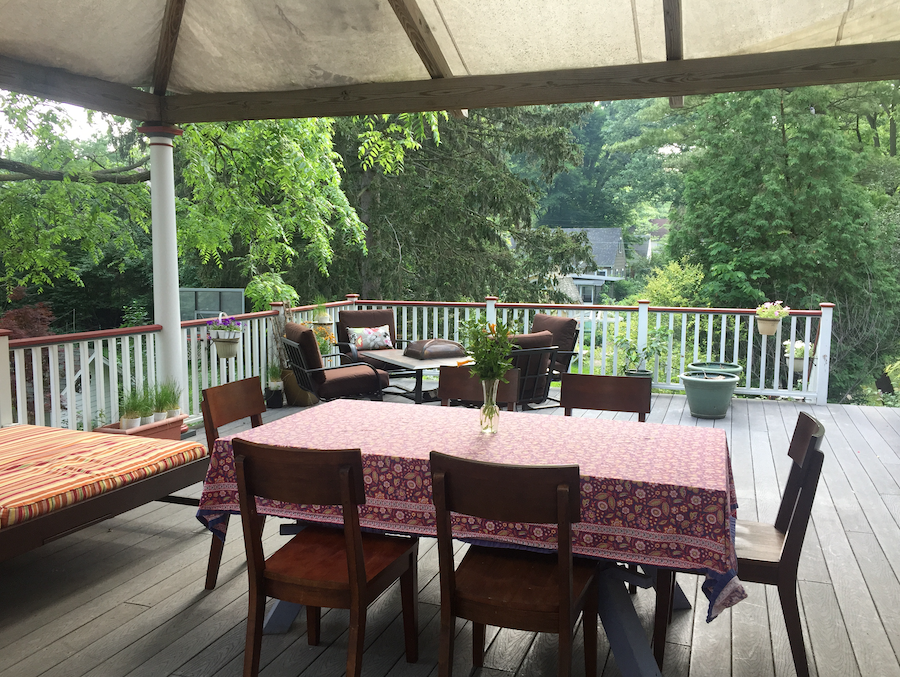
When 615's last owners were in the process of trying to sell their house, we lived in trepidation. It seemed quite possible someone would move in and immediately cut down the oak out front and the walnut out back. Some people think a house shouldn't have a tree within 30 feet of it. Trees are "messy." They "attract animals." They drop leaves and nuts.
Then a neighbor two houses away cut down a perfectly healthy hundred-year-old black walnut, and we panicked. I consulted a real estate attorney to ask if there was a way – if we owned both houses – we could legally protect the trees.
"Sure," he said. "It's called a conservation easement." He sent me three examples.
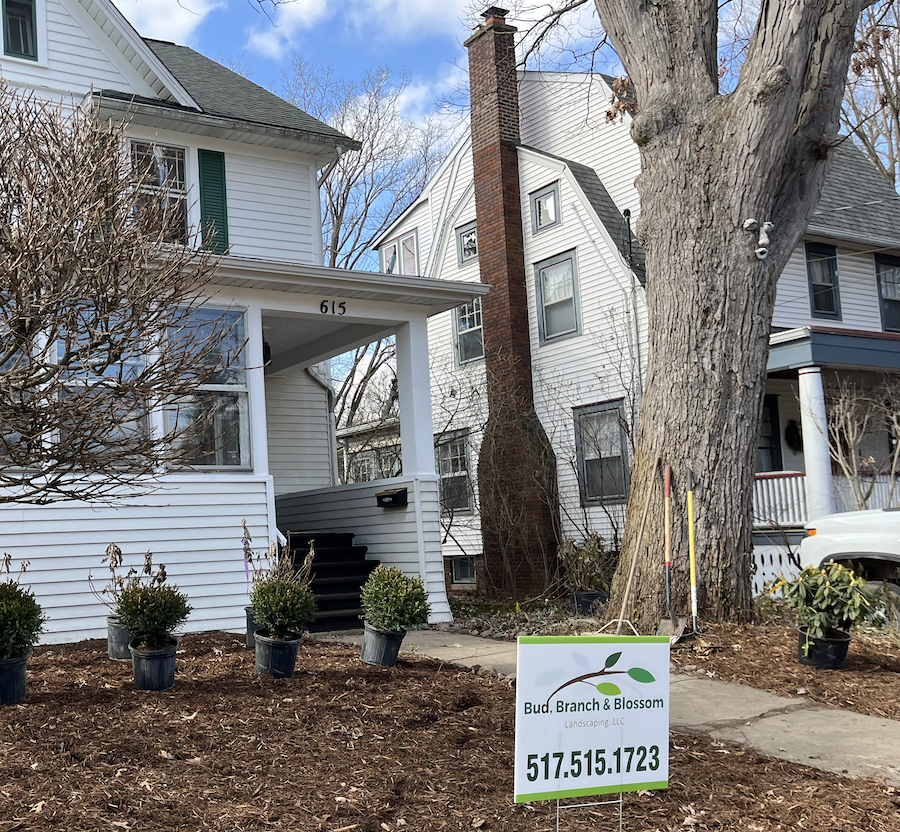
Long story short, I panicked enough about losing the trees that I talked Aron into us buying 615, rehabbing it, and reselling it with a legal protection for the trees.
As I thought about the legal protection, I wondered if we could legally name the trees in the documents. "Sure," the lawyer said again. We quickly settled on naming the oak after Bob and the walnut after Ann.
This Tuesday, a tree expert came to give our lawyer official assessments of the trees for the purposes of the legal protection. We thought Bob was a red oak, but it turns out he is a white oak.
"Presumably this tree was planted near the time of the home's construction in 1923," the tree expert wrote, "therefore 100 years old is a reasonable age estimate. Total height is approximately 60'. The tree is in reasonable health, given its location in an urban setting."
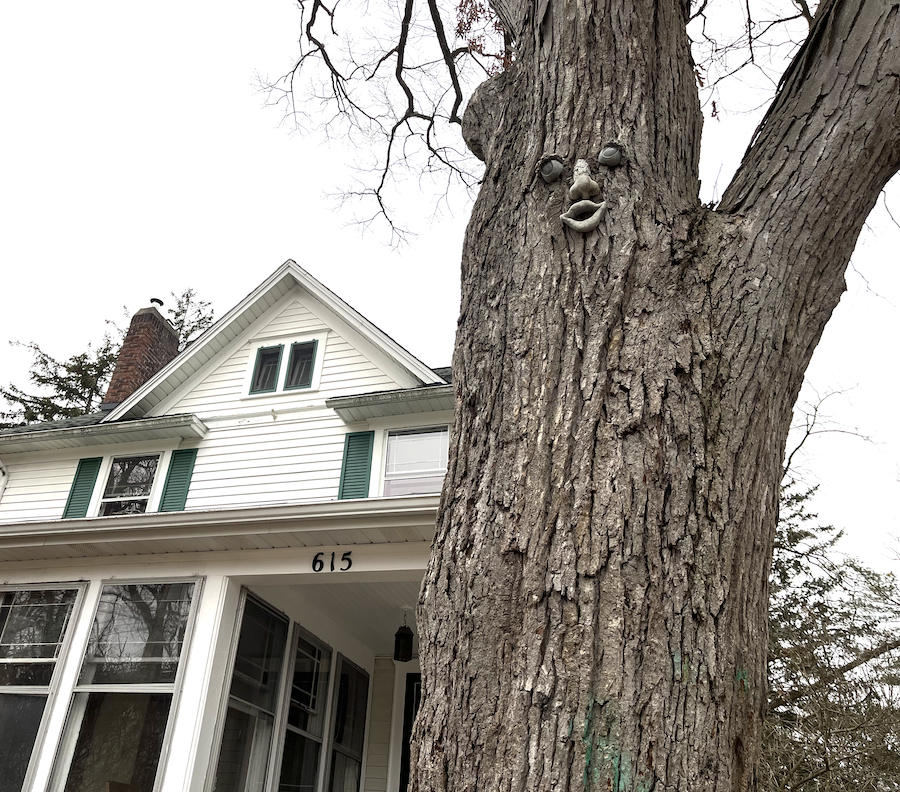
The tree expert's description of Ann the Black Walnut delighted me immediately, for reasons you will understand if you know me:
"This tree is likely to be a 'volunteer,' planted by a squirrel some 5 decades ago. Fifty years is a reasonable age guesstimate. The individual appears to be in good health with no dead or dying limbs evident. It is straight without lean and approximately 45' tall....A seam runs much of the length of the trunk on its east face, possible evidence of a lightning strike or frost crack, [but] it is now healed."
For reasons not worth going into here, rather than doing a conservation easement, we're putting in the protection in the form of a deed restriction. The lawyer asked me to lay out the reasons for caring about these trees. Consequently, this is what the deed restriction explains, after identifying Bob and Ann by location, species, and approximate age:
- As mature, deciduous trees with beautiful trunks, Bob and Ann add substantial esthetic value year-round, which also adds real estate value. According to research cited by the National Association of Realtors® and the Arbor Day Foundation, “Having large trees in yards along streets increases a home’s value from 3 to 15 percent.”
- Bob and Ann absorb substantial amounts of water following rains, keeping that water from around our foundations and keeping it from draining into the sewer system, where it will unnecessarily be treated with chemicals before discharge into the Red Cedar River. A mature oak tree can soak up as much as 40,000 gallons of water per year, and a mature black walnut up to around 10,000 gallons per year. Cutting down mature trees adds to flooding risks, particularly because the soil is left with a tangle of dead roots that get in the way of absorption.
- Bob and Ann provide substantial shade to 615 and 621, reducing the cost of cooling our homes in the summer. The shade cover they provide with their broad canopies is of real benefit. According to research from the Center for Urban Forest Research, a tree on the west side of a home (which Ann is) reduces energy bills. “If you plant a tree today on the west side of your home, in 5 years your energy bills should be 3% less. In 15 years, the savings will be nearly 12%.”
- In the words of the U.S. Forest Service, large, mature trees like Bob and Ann “are climate change, carbon storage heroes… If climate change is a battle for Earth’s survival, then trees indeed will be a vital army holding the line.”
- As local fauna are stressed by climate change, Bob and Ann provide habitat for innumerable species, including insects that keep our bats and birds alive. The bird species we have seen in these two trees include cardinals, blue jays, titmice, nuthatches, downy woodpeckers, hairy woodpeckers, red-bellied woodpeckers, northern flickers, sharp-shinned hawks, cooper’s hawks, crows, chickadees, sparrows, cowbirds, catbirds, and more. The local habitat would be substantially harmed by the loss of these two majestic trees.
The deed restriction then lays out what the owners of 615 can do and what we must do. Basically, as long as we or Kepler own our house, every two years, we must have the two trees inspected and we must do what's needed to maintain their health, at our expense. We have the right to enter 615's property to do what we need to do to take care of these two trees.
Until our family no longer owns our house, the owners of 615 can't cut or otherwise harm these two trees or their branches or apply chemicals to them without our written permission. If they violate the restrictions, they have to pay us $12,000. That should be enough to discourage intentional damage.
The deed restriction also says that we have to "maintain suitable markings on the Trees to show their status under these Restrictions," so, before we sell 615, we have to figure out how we want to do that – probably with some little plaques attached to the trees.
This may seem like a lot of trouble to go through for two trees, but if you had witnessed the number of trees destroyed in our neighborhood over the 25 years we've lived here, and you understood the trees and the ecosystem, you might feel the same way we do. The main thing we hope to achieve with this deed restriction is attracting owners who love trees and their inhabitants like we do.
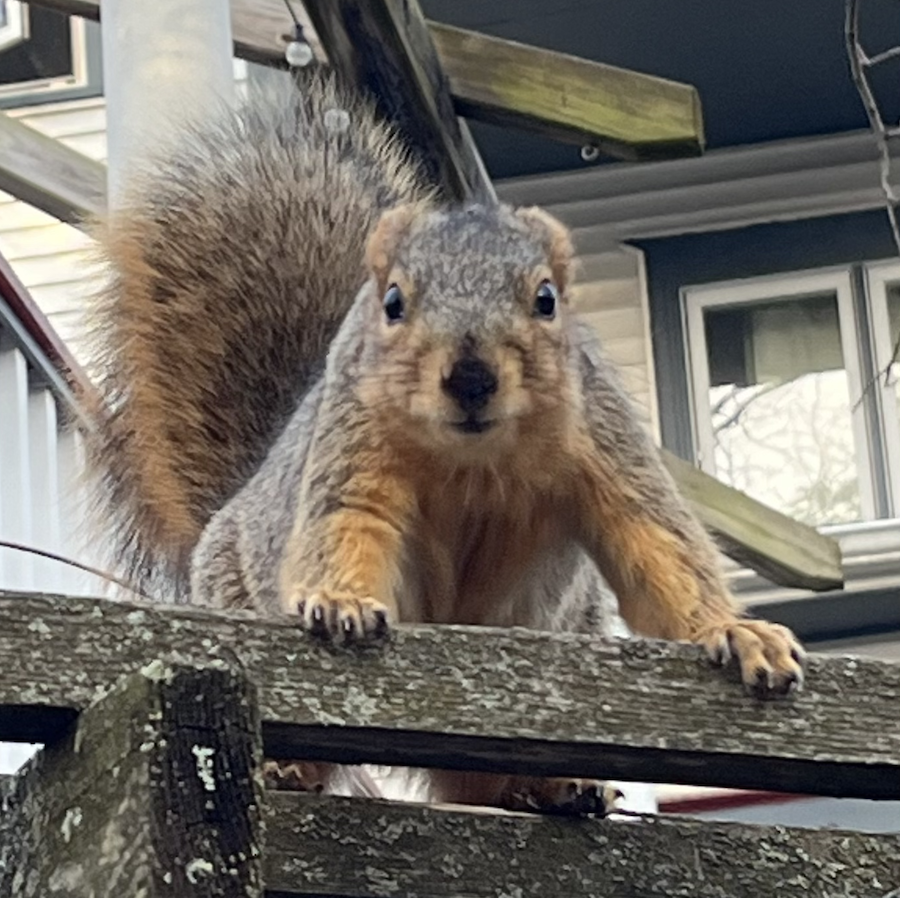
Monday is going to be a busy day at 615. The electrical inspector is finally due to show up – it turns out he's a single dad who's been on spring break with his kids this past week, so that's why he's been MIA – and the electricians are coming back, too. So is the framer and possibly also the drywaller. And, of course, the remediation team comes, too, starting Monday – and ending Tuesday (we hope).
In theory, this will be the week the new drywall starts, in the kitchen. It feels appropriate that this is also likely to be the week the weather starts to warm enough that the trees will bud, although the oak and the walnut are always later than their friends. The lilacs are already getting going, as is the ornamental quince.
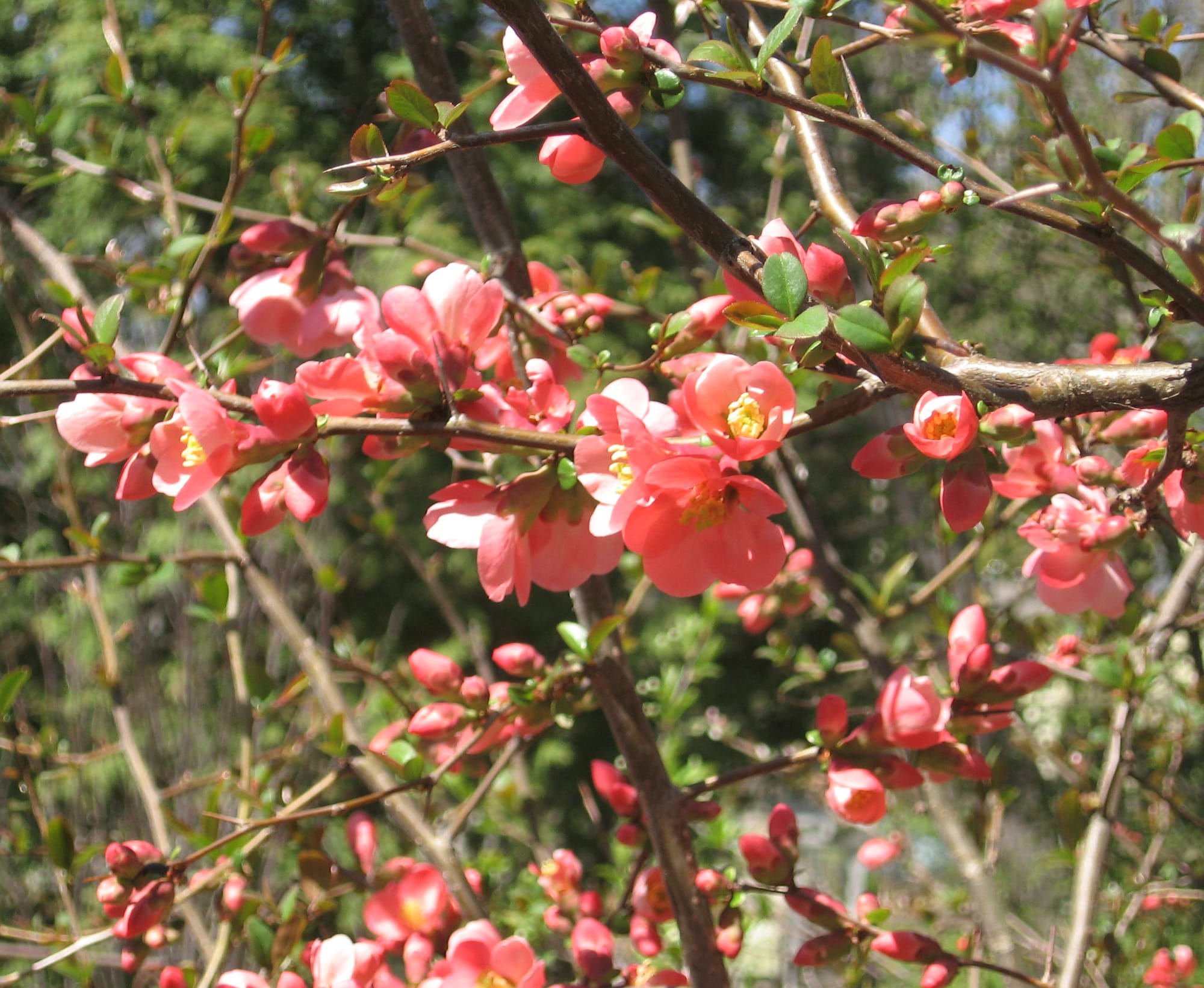
How pretty it will be soon. How visibly pregnant will be my squirrel friend Audrey. And the robins, as always, will be looking for places with coverage in the northwest corners of everything – the porch columns, the eaves of our houses, the trees.
Member discussion